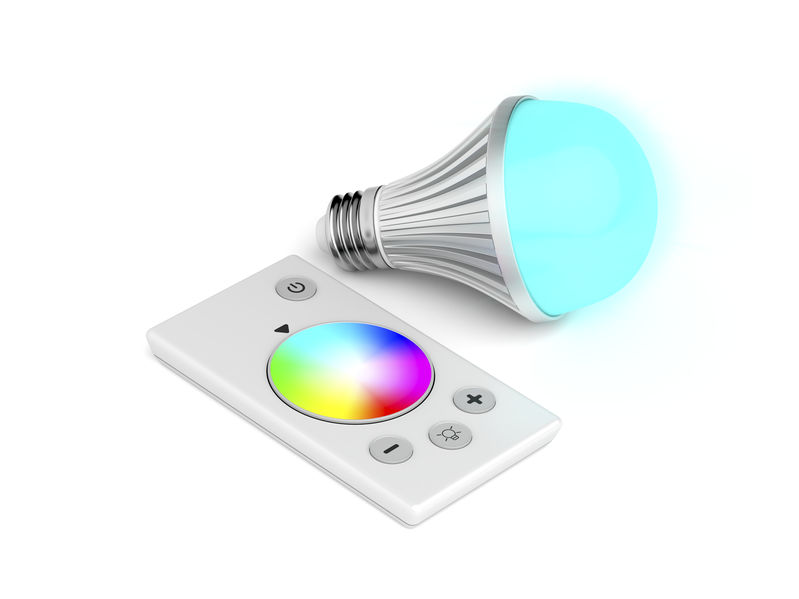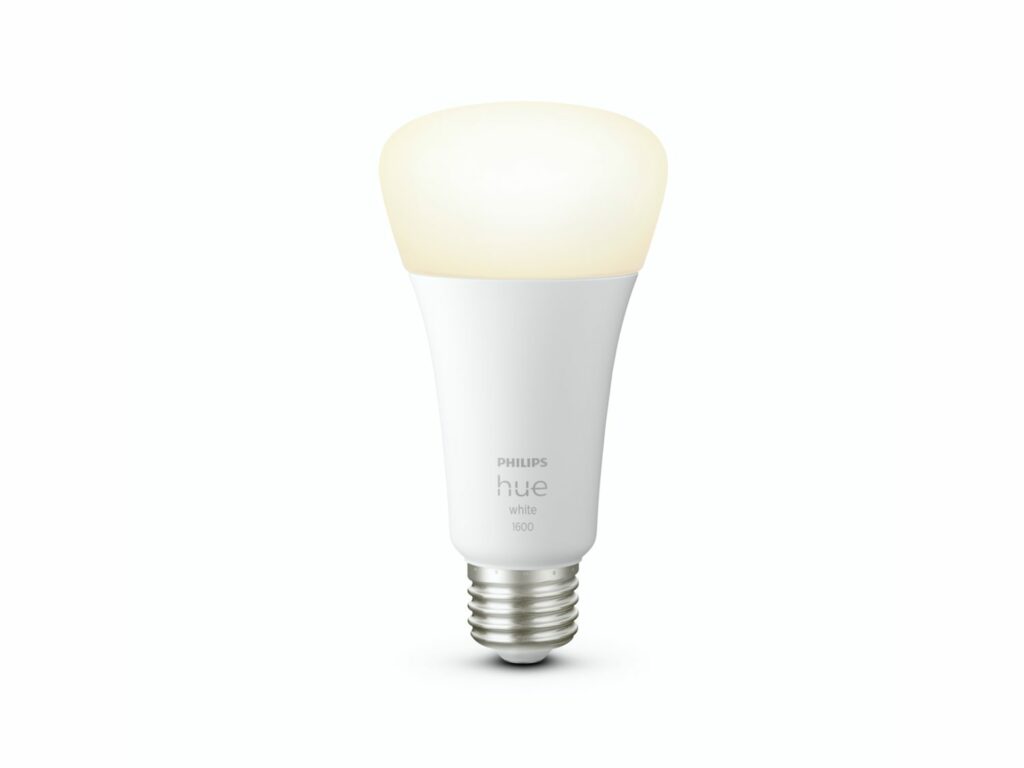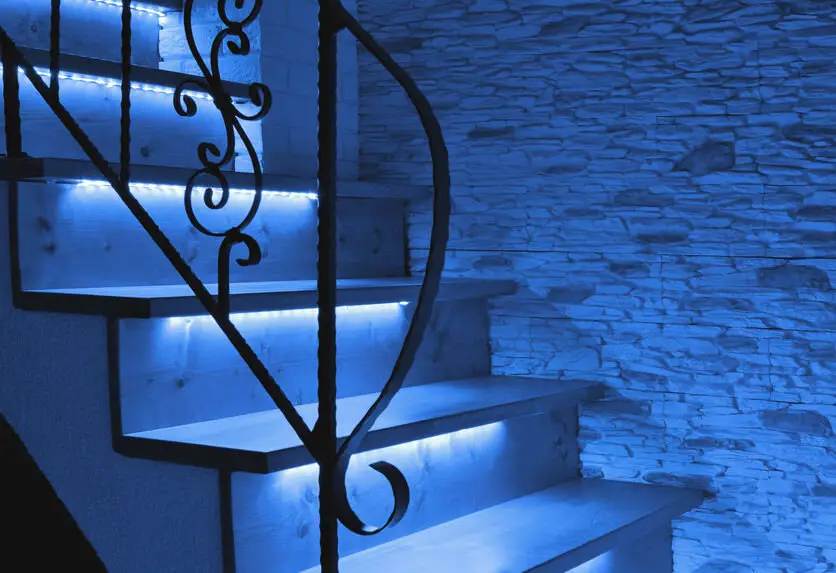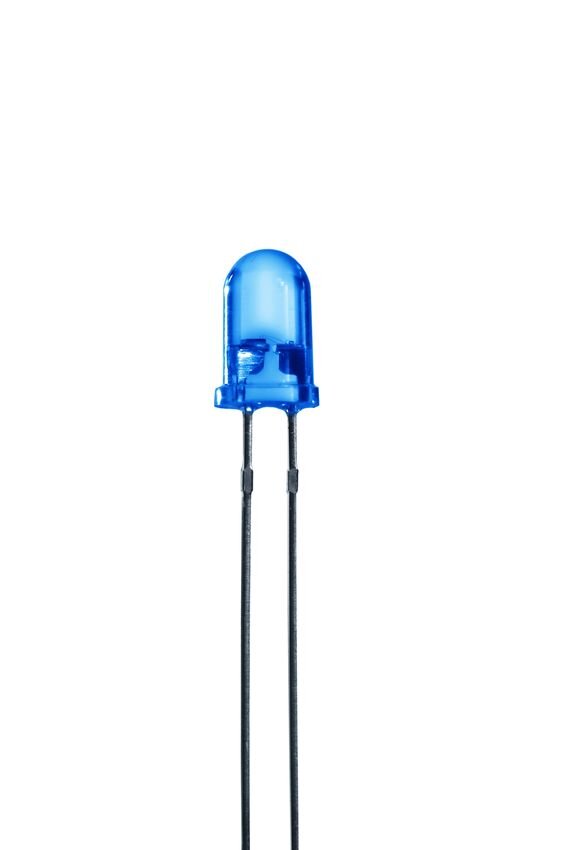Do Smart Lights Use Electricity When Turned Off?
A common question about smart lighting is whether or not it uses any electricity when it’s turned off. The main reason for this belief is that the power to the socket/outlet it’s placed in will still provide the smart lighting with a voltage even when it’s turned off. And as it turns out, this belief turns out to be accurate.
Smart lights do in fact use power when they’re turned off. Smart lights use around 0,3W on average per hour, which equates to 7.2W on average per day and 2,6kWh per year. With an electricity price of $0,2 per kWh, this number equates to a cost of 0,15 cents per day and $0,52 per year of use.

Why Smart Lights Use Power When They’re Off
The reason why smart lights use power when they’re off is simply that they need to be turned on to a degree in order to receive their next set of instructions. This means that the lights will still draw a small amount of power even though they don’t actually emit any light.
The reason this is important is that the signal-receiving unit inside of the bulb won’t register a signal if it isn’t powered. For this reason, they must always draw power in order to be operated at a distance.
This concept mainly applies if the lights connect to a phone or remote directly though, otherwise it will likely be connected straight through the wifi. This will also require it to use constant power in order to maintain a strong connection with the wifi.
This type of power can also be referred to as “Vampire power“, which is a name given to when a device uses power even though it’s not actually turned on. Some other devices which are subject to vampire power are TVs, videogame consoles and computers.
How Much Power Do Smart Lights Use When Turned Off?
Now that we know how and why they use power, how much of it do they actually use when they’re off? This can differ a bit from different models and manufacturers, but a general average across the biggest manufacturers of smart lighting such as Philips Hue is around 0,2-0,4 Watts per hour of use.
This number is usually labelled as the “standby power“, due to how the bulb is practically on standby until it receives its next signal. The standby power is determined by how much power the receiving transmitter uses on average.
How Much Do Smart Lights Cost To Run?
Since we have a number of how much smart bulbs use while on standby (0,2-0,4W) we can begin to calculate how much they actually cost to run.
In order to not have to work with different watt ranges, we will simply use the number 0,3W as the standardized standby power for simplicity’s sake. We will however include calculations for the other standby powers too.
With the number 0,3W, we can begin to look at how much power they actually use and how much that translates into in terms of electricity costs.
Firstly we will need to calculate the total power usage over the course of time. This can be done by simply using the wattage it’s labelled with since that number specifies how much power it uses per hour of continuous use. A table calculating these numbers will look like this:
| Standby Energy Usage | 0,2W | 0,3W | 0,4W | 0,5W |
|---|---|---|---|---|
| 1 Hour | 0,2W | 0,3W | 0,4W | 0,5W |
| 1 Day | 4,8W | 7,2W | 9,6W | 12W |
| 1 Week | 33,6W | 50,4W | 67,2W | 84W |
| 1 Month | 144W | 216W | 288W | 360W |
| 1 Year | 1728W | 2592W | 3456W | 4320W |
With these numbers in hand we can begin to calculate how much these lights actually cost to use on standby. However, in order to do this we need a cost of electricity.
The price of electricity around the world varies a lot depending on how much of it the different countries produce and their means of production since that causes the price to fluctuate the most.
As a standardized average though it seems that $0,2 per kWh is the most common. $0,2 per kWh means that the electricity costs 20 cents per kilowatts used, which is exactly equal to 1000W.
With an electricity price of $0,2 per kWh, we can calculate how much it actually costs to run. A table with these calculations will look like this:
| Standby Energy Cost | 0,2W | 0,3W | 0,4W |
|---|---|---|---|
| 1 Hour | $0,00004 | $0,00006 | $0,00008 |
| 1 Day | $0,001 | $0,0015 | $0,002 |
| 1 Week | $0,007 | $0,01 | $0,014 |
| 1 Month | $0,03 | $0,043 | $0,06 |
| 1 Year | $0,36 | $0,52 | $0,72 |
These numbers are calculated with two simple steps. These steps go as following:
Turn the total watt usage into kilowatts. This is done by simply dividing the number of watts used by 1000. For example, 1 year of 0,3W standby equals 2592W according to our table, which divided by 1000 becomes 2,592kW.
Take the number you just got and multiply it by the electricity price. In the same example it would go like this:
2,592kW * $0,2 = $0,5184 or roughly $0,52. This is the total cost for running the bulb on standby for one entire year.
Smart Lights Compared To Regular Bulbs
Now that we’ve established how much power these bulbs use on standby we can compare them to regular bulbs and see how they fare in terms of costs and efficiency.
Since the smart bulbs use power when they’re off it’s obvious that those will lose in terms of efficiency in comparison to regular LED bulbs. But the point of interest in this is exactly how much they lose in that comparison.
For this comparison, we are going to keep it simple. Let’s assume that we have a few different bulbs of the same lumen but different watts over the course of a day. We will assume that each bulb stays on for 12 hours during the day for comparison’s sake. The chart comparing these factors will look like this:
| Comparison @1600 lumen | Smart LED Bulb | Regular LED Bulb | CFL Bulb | Halogen Bulb |
|---|---|---|---|---|
| Marked Wattage | 17W | 13W | 25W | 72W |
| Power Used When Off 12h | 4,8W | 0W | 0W | 0W |
| Power Used When On 12h | 204W | 156W | 300W | 864W |
| Total Power Used 24h | 208,8W | 156W | 300W | 864W |
| Cost Of 24h Of Use | $0,042 | $0,031 | $0,06 | $0,17 |
These calculations were done with this Philips Hue smart bulb which measures in at 17W with a max standby power of 0,5W.

This bulb is a great choice for a general-purpose light bulb since it has all smart light features as well as the lighting strength that a lot of smart bulbs seem to lack.
From this chart, we can conclude that the standby power isn’t as impactful as you might think. While it does add up the longer it stays idle, it will still take multiple hours for it to use as much power as the bulb will use in its active state.
That said, the smart functionalities of it do cause it to use more power in general than your regular LED bulb, despite their light-generating principles being the exact same.
To be more specific the smart bulb in the example uses around 35% more power than the regular LED bulb.
This percentage can fluctuate a lot depending on how many watts they’re marked with and the standby power but as a general baseline, it’s common to see them use around 30-40% more power than LED bulbs over the course of their service life.
Conclusion
The main conclusion here is that smart LED lights do in fact use electricity when they’re turned off. That said, the amount they use is not much in comparison to how much they use when they’re turned on.
These numbers are in fact so insignificant that unless you have over 100 smart bulbs in your home you will likely not even notice the impact it has on your electricity bill.
With all of this said it can be worth looking at the standby power when buying new smart bulbs since it can impact energy usage on a larger scale.
However, do note that when it comes to smart bulbs you’re paying for their functionality of it and not their efficiency. If you’re looking for pure energy efficiency you’re way better off going for regular LED bulbs with high luminous efficacy.





